#Club Villa San Carlos
Explore tagged Tumblr posts
Text
Se viene el Torneo Clausura de Básquet “Copa La Plata Capital” con la participación de ocho clubes locales
Se viene el Torneo Clausura de Básquet “Copa La Plata Capital” con la participación de ocho clubes locales El próximo viernes 2 de agosto inicia el Torneo Clausura “Copa La Plata Capital” de básquet, con equipos masculinos y femeninos de La Plata, Berisso y Ensenada.
El próximo viernes 2 de agosto inicia el Torneo Clausura “Copa La Plata Capital” de básquet, con equipos masculinos y femeninos de La Plata, Berisso y Ensenada. El próximo viernes 2 de agosto inicia el Torneo Clausura “Copa La Plata Capital” de básquet, organizado por la Asociación Platense de Básquetbol (APdeB) y apoyado por la Municipalidad de La Plata. La competición incluye categorías…
#APdeB#Asociación Platense de Básquetbol#Atenas#básquet#Berisso#Club Atlético Platense#Club Banco Provincia La Plata#Club Hogar Social de Berisso#club Juventud#Club Meridiano V#Club Reconquista#Club Universal#Deportivo San Vicente#Ensenada#Estudiantes de La Plata#La Plata#Municipalidad de La Plata#Torneo Clausura “Copa La Plata Capital”#Unión Vecinal#UNLP#Villa San Carlos de Berisso
0 notes
Text

2024 New Flag Wars: Round 1
Now that 2024 is over, it’s time to decide what the greatest flag to be adopted last year is! So many amazing flags were adopted in 2024! This tournament will feature new flags from 19 countries and every continent other than Antarctica. Although it focuses on officially adopted flags, I will also be including the de facto flag of Syria even though it hasn’t officially been adopted yet. Let me know which flag you want to win, and I hope everyone had a great 2024!
See the brackets below:
Round 1:
1. Kenduskeag, Maine vs. Tamilaga Vettri Kazhagam vs. West Betuwe, Netherlands vs. Plonski District, Poland vs. Pagiriai, Lithuania vs. San Carlos de Bariloche, Argentina
2. Grobiņa, Latvia vs. St. Mildred's-Lightbourn School vs. Apopka, Florida vs. Middleburgh, New York vs. Maashorst, Netherlands vs. King's Flag for Australia
3. Iola, Kansas vs. West University Place, Texas vs. Waco, Texas vs. Bolaños de Calatrava, Spain vs. El Casar de Talavera, Spain vs. Hyattsville, Maryland
4. Ribadavia, Spain vs. Hervías, Spain vs. Saturna Island, British Columbia vs. Terre Haute, Indiana vs. Syria (de facto) vs. Orihuela del Tremedal, Spain
5. North Branford, Connecticut vs. Raytown, Missouri vs. Ann Arbor, Michigan vs. Frankfort, Kentucky vs. Lockport, Illinois vs. Ottawa Hunt and Golf Club
6. American Society of Heating, Refrigerating and Air Conditioning Toronto Chapter vs. Traditional Area of Ashanti Akyem Hwidiem, Ghana vs. Alfondeguilla, Spain vs. Dukstos, Lithuania vs. Estación General Paz, Argentina
7. Bokša, Slovakia vs. North Newton, Kansas vs. Evansville, Indiana vs. Rukainiai, Lithuania vs. Asturianos, Spain
8. Zuera, Spain vs. Las Playas, Argentina vs. Organization of Turkic States vs. Indre, France vs. Quebracho, Uruguay
9. Skašov, Czechia vs. Evanston, Illinois vs. Matuizos, Lithuania vs. Tocina y los Rosales, Spain vs. Lithuania Minor, Lithuania
10. College Jean-Eudes Inc. vs. Laspaúles, Spain vs. Laguna de Negrillos, Spain vs. Nevřeň, Czechia vs. Media Naranja, Argentina
11. Carballiño, Spain vs. Urbandale, Iowa vs. Malý Beranov, Czechia vs. Gulfport, Mississippi vs. Nanton, Alberta
12. Armuña, Spain vs. El Oso, Spain vs. Lima, Argentina vs. Foreign Intelligence Service of Ukraine vs. Vlčatín, Czechia
13. Santa Fe, Argentina vs. Chrtníč, Czechia vs. Valdeavellano de Tera, Spain vs. Višakio Rūda, Lithuania vs. Norwich, New York
14. Wotje Atoll, Marshall Islands vs. Cortegada, Spain vs. Turkish Land Forces vs. Marijampolis, Lithuania vs. Sanagasta Department, Argentina
15. Villa Carlos Paz, Argentina vs. Overbrook, Kansas vs. Garden Plain, Kansas vs. Torralbilla, Spain vs. Île Saint-Louis, France vs. Zlatopil, Ukraine
16. Arno Atoll, Marshall Islands vs. Drimmelen, Netherlands vs. St. Michaels University School Society vs. El Tanque, Spain vs. Vlkanov, Czechia vs. Sarandí del Yí, Uruguay
12 notes
·
View notes
Text
Durante la madrugada de este jueves, el presidente de la Federación Peruana de Fútbol (FPF), Agustín Lozano, fue detenido por la Policía Nacional durante un operativo de allanamiento y descerraje de su vivienda y de otros inmuebles vinculados a la presunta organización criminal ‘Los Galácticos’. Junto a él, Joel Raffo, presidente de Sporting Cristal, y otros seis dirigentes fueron arrestados. La orden judicialEste operativo se llevó a cabo de manera simultánea, con el allanamiento de la vivienda del presidente de la FPF en el distrito de San Borja, así como de las instalaciones de la Villa Deportiva Nacional (Videna) en San Luis. Es importante precisar que, de acuerdo con la hipótesis fiscal, la red criminal estaría compuesta por Joel Raffo, presidente de Sporting Cristal; Giselle Mandriotti, presidenta del club Academia Cantolao; Sabrina Martín Zamalloa, secretaria de la FPF; Jean Marcel, exsecretario de la FPF; Genaro Miñán, presidente de la Liga de Tumbes y Juan Carlos La Rosa, exfutbolista
Todos los mencionados estarían implicados en actos de corrupción y serían testigos clave en el caso, motivo por el cual fueron detenidos de manera preliminar. Esto se debe a que, en el marco de las investigaciones, el Ministerio Público encontró que Lozano habría repartido dinero y perdonado deudas a clubes de fútbol y ligas departamentales por un monto de 8.3 millones de soles.Es importante mencionar que Agustín Lozano está siendo investigado por la fiscalía por los presuntos delitos de fraude en la administración, corrupción y lavado de activos, debido al supuesto uso indebido de los recursos de la FPF, así como al presunto favorecimiento de algunos clubes peruanos. Además, también está implicado en la reventa de entradas y viajes al Mundial de Qatar 2022, entre otras acusaciones.

0 notes
Text
LAS PALMAS ATLÉTICO ASIGNA SUS 27 DORSALES PARA PELEAR POR EL REGRESO A LA SEGUNDA FEDERACIÓN

El conjunto dirigido por Raúl Martín se rejuvenece con la salida de sus futbolistas de mayor valía a equipos de Primera Federación
El goleador Pau Ferrer a la UD Ibiza, Gabriel Felipe"Palmero" a la Gimnástica Segoviana, Iñaki González al Unionistas de Salamanca, además de Johan Guedes al Celta Fortuna, además de otros como el capitán Dani Ojeda que terminó contrato y fichó con el Burgos CF, además de la subida al primer equipo de Juanma HerzogHerzog, más las cesiones de Ale Rodríguez "Palanca" a la Balompédica Linense de Segunda Federación y Abou Bassinga al CD Mirandés de Segunda A
Mantiene a 9 futbolistas del pasado curso, subiendo 5 del Regional Preferente y 3 del División de Honor Juvenil, además del todavía juvenil de 16 años Valentín Pezzoli y el regreso de 3 futbolistas cedidos que vuelven al club y la llegada de otros 6 del exterior
Antonio León
A 48 horas de que eche a rodar el balón en la Tercera Federación y además jugando Las Palmas Atlético en el Municipal de Vecindario ante el Estrella CF, el Departamento de Captación capitaneado por Manuel Rodríguez "Tonono" ha publicado esta tarde la lista de futbolistas con sus dorsales, que comenzarán la competición a las órdenes de Raúl Martín García y Nauzet Alemán.

Suben 5 futbolistas del equipo C, Campeón de la Regional Preferente, como los casos del defensa central derecho catalán Roger Munells y el izquierdo con bastantes goles anotados el pasado curso Carlos Navarro, además de Álvaro Santana (5). Además también el centrocampista Omar Sánchez y el extremo Carlos Vicente.
Suben 3 futbolistas del División de Honor Juvenil que ya no lo son, como el delantero récord de las categorías inferiores, Tomás Medina (29) y los defensas Sergio Viera (16) y Valentino Racca (25), además del actual juvenil de 16 años que ha hecho pretemporada con el primer equipo, el lateral derecho argentino criado en Tenerife, Valentino Pezzoli (32).
REGRESAN TRES FUTBOLISTAS QUE ESTABAN CEDIDOS.
Regresan al equipo el defensa central derecho teldense o lateral Brian Velázquez, tras su paso la pasada campaña por la UD San Fernando en Segunda Federación, al igual que el defensa Kimetz García (23) donde realizó buena campaña en el Arucas CF y el mediapunta o éxtremo santaluceño Dani López (24), tras su paso la 2ª vuelta por la Union Deportiva Villa de Santa Brigida
6 LLEGADAS DESDE EL EXTERIOR.
Pero además de los futbolistas propios, han llegado este verano para reforzar al filial amarillo el lateral izquierdo galdense Zeben Ramos que tan buena campaña hizo el pasado ejercicio en la UD Villa de Santa Brígida.
También el lateral derecho Víctor Toledo "Vitolo" que regresa a Gran Canaria tras ascendee en Junio a Segunda Federación con el C.D. Union Sur Yaiza Montaña la Cinta - Oficial.
Otra de las nuevas adquisiciones es el lateral o extremo aruquense con mucho desborde, Jorge Pérez (14) procedente de la UD Tamaraceite y también el joven mediapunta procedente del Estrella CF, Miguel Ángel Viera tras su paso por el Acodetti.
Además llega Yonathan Pérez (6) y el mediocentro ú 8 Raúl García (18) procedentes del CD Tenerife, tras varios años en el club blanquiazul
0 notes
Text
Jimena Goniken en Buenos Aires y Córdoba
Tras brillar en el Club Cultural Matienzo de Buenos Aires, Jimena Gonik prepara dos nuevos shows en formato full banda. El primero será el jueves 6 de Junio en el Salón Auditorio de Ciudad Cultural Konex de la Ciudad de Buenos Aires en el marco del ciclo Semillero, espacio que destaca las propuestas musicales más sobresalientes de la escena emergente argentina. Luego, el viernes 7, la artista se presentará en la casa de arte Pez Volcán, ubicada en el barrio Güemes de Córdoba Capital.

Cantante, compositora, música, actriz, Jimena Gonik emerge como una figura distinta en la escena musical argentina. Dueña de una voz privilegiada y de un estilo personal genuino, esta joven y multifacética artista de 24 años nacida en Villa Crespo se abre camino en la industria más allá de toda tendencia.
De genética y hábitos melómanos tempranos, sus influencias abarcan artistas tan disímiles como esenciales de la altura de Ella Fitzgerald, Queen, Carlos Gardel o Lauryn Hill, entre otros. De ahí a que su música, aunque coquetea con el pop, abraza el multiverso. Y de ahí también, su reciente revelación como impensada influencer, sumando más de 500 mil seguidores en su cuenta de Instagram a partir del proyecto “366 discos” en el cual recomienda un disco por día. Comprometida como es, para Jimena esta iniciativa es mucho más que subir un video diario y responde a la necesidad de conectar con otros amantes de la música, incentivando a su vez a la comunidad a retomar un hábito que se ha perdido: escuchar discos enteros.
Ganadora de la Bienal de Arte Joven 2022 y “Proyecto Disco” de Estudio Urbano llenó Niceto Club, Niceto Bar y abrió en 2023 para Los Tipitos en La Trastienda, además de realizar una exitosa gira por San Juan y Mendoza. En Abril último agotó las localidades para despedir su álbum debut “Romantik” en el Club Cultural Matienzo.
En constante metamorfosis, Jimena Gonik inicia la transición hacia su segundo disco de estudio, que será lanzado muy pronto por Popart Discos.
0 notes
Text
Santiago de Cuba: La «provincia museo» o de los museos
El mismísimo sitio fundacional de antigua villa de Santiago de Cuba, el emblemático parque Céspedes, está custodiado por museos y edificios relevantes: al sur está el Ambiente Histórico Cubano (otrora casa del adelantado Diego Velázquez); al norte la sala de arte, una extensión del Museo Provincial Emilio Bacardí y Moreau (en el ecléctico club San Carlos); al este se encuentra el museo…

View On WordPress
0 notes
Text
Homenaje a los caídos en la Guerra de Malvinas del CEVECIM
Homenaje a los caídos en la #GuerradeMalvinas del #CEVECIM #Berisso #Institucionales #Sociedad #2A
Se realizó el homenaje a los Soldados Conscriptos Ex Combatientes de Malvinas, al conmemorarse el 2 de abril, el “Día de los Veteranos y Caídos en la Guerra de Malvinas” organizado por el Centro El Veterano Ex Combatiente Islas Malvinas (CEVECIM).Para dar inicio al homenaje se convocaron en calle 8 entre 159 y 160, y desde allí se trasladaron en una caravana sobre la Avenida Génova, que llevó por…

View On WordPress
#2 de abril#Berisso#Centro el Veterano Ex-Combatiente Islas Malvinas#CEVECIM#Club Villa San Carlos#Concejo Deliberante#Fabián Cagliardi#Guerra de Malvinas#Jorge Di Pietro#Soldados Conscriptos Ex Combatientes de Malvinas#Vanesa Queyffer
0 notes
Text
⚽️ Victorias Racing y Lanús
⚽️ #FútbolFemenino #CampeonatoYPF2022 - Victorias Racing y Lanús...
Este lunes, con dos encuentros, continuó desarrollándose la 21° fecha del Campeonato YPF 2022 del fútbol femenino argentino. (more…)

View On WordPress
#Campeonato YPF 2022#Deportivo Español (Ciudad de Buenos Aires)#Fútbol Femenino#Lanús (Lanús Bs As)#Racing Club (Avellaneda)#Villa San Carlos (Berisso - Bs As)
0 notes
Text
Spending New Year's Eve with team Bucciarati
Listen, I'm feeling really soft and self indulgent, have these HCs of how I think NYE would be with each one of the Bucci gang members
Buon Capodanno 🌟🐞🕊
Warnings: none, only fluff
Bruno Bucciarati

New years eve with Bruno goes one of two ways, but ultimately always ends with the most tender kiss at the stroke of midnight.
Option 1 would be at a secluded corner/ private lounge of one of Naples finest jazz clubs. Impeccably chosen food and drinks accompany the soft jazz music playing in the background.
He would definitely ask you to dance between courses and would time it so that your last dance for the night syncs with the count down, kissing you just as the the count down hits 1.
Option 2 would be a dinner in his yacht. I feel he's still fond of the ocean even after he joined Passione.
All your favorites would be laid out, but you both would be in a more relaxed setting so you'd be dressed more comfortably. You don't mind though, it's a joy to see Bruno with his hair down and the lighter hue his eyes take on when he's in this lighthearted mood.
You'd spend the time reflecting on the year while nestled in each others arms, it's chilly out, so you're both huddled under some blankets, not really keeping track of the time. Your indication of the fact that new year has dropped is the stunning firework display you can see in the horizon, prompting you both to kiss, continuing to revel in each other's company.
Giorno Giovanna

Giorno's plans for you either involves some travel or an elaborate well-planned evening at the villa.
Watching the fireworks display from the Eiffel tower from your luxury penthouse in Paris or the Sydney Opera House depending on what season you're both looking to experience, Giorno will make it happen for you. He wants to create wonderful shared experiences for the two of you so be prepared to be wowed regardless of where you find yourself.
He works hard for most of the year and sees this time of the year as time devoted to just the two of you and the rest of your loved ones, so expect him to be extra affectionate and reflective of the year that was and hopeful for the year to come.
If you'd rather stay at the villa, rest assured that his staff will take care of all the preparations, making sure your glasses are full, the food is perfectly made and the courses are well timed. Weather permitting, Giorno will transform the a little area either in the beach or the balcony into an enchanted alcove for the two of you.
At the stroke of midnight, he'd have a few meaningful fireworks released, and similar to Bruno, you both would kiss and spend the time nuzzled in each other's arms, him placing small kisses to your fave and nestling his head on your shoulder.
He is definitely going to let you know how much you mean to him and how grateful he is to be ringing in the new year with you.
Leone Abbacchio

One of the most memorable places to spend NYE with Leone is at the Teatro Ala Scala in Milan to watch one of the wonderful concerts.
He really appreciates the wonderful music and enjoys seeing you all dressed up, limned by softer lighting in the balcony seats of the theater.
Afterwards he'd protectively drape his arm over you or simply just hold your hand and you'd casually stroll back to your hotel room.
If you both wanted to stay in Naples though, he'd take you to one of the many open air concerts or the Teatro San Carlo and then you would meander your way toward the promenade to watch the stunning firework displays at Castel dell’Ovo.
All in all, he wants to spend this time with you, his persona in Passione is different, allowing you to see facets of his personality that were well hidden, and so on times like this, his focus shifts to you and his own happiness.
Guido Mista

Put on your dancing shoes and sexiest outfit because there's no doubt that you and Mista are painting the town red.
Expect a night of crawling Naples most elite clubs and lounges.
Mista's fun loving nature really comes through during this time of year, he's an astute gangster most of the time who isn't going to be shy about enjoying the fruits of his labor.
Confident himself, he's proud of you as well and wants nothing more than to show you off while having the time of his life. There's no room to be a shrinking violet with Mista, and somehow his infectious laughter and charming personality, he draws out your more outgoing traits as well.
Will use his influence to get you into places that are at capacity and probably already has his private areas booked out and waiting for you both.
At the stroke of midnight this man is breaking out the Cristal, to Mista, life is something that is meant to be celebrated and its never more apparent than in those moments with him.
Pannacotta Fugo

Fugo's celebrations would be steeped in appreciating culture.
Think a traditional dinner, perhaps after going to one of the many concerts that are taking place at the piazza or spend the night at one of Naples wonderful rooftop terrace cafes.
If neither of you are up for going out, he would find it just as precious, if not more so, if you both had a quiet night in
It's not mmediately apparent but he loves warm domestic moments with you. His home life was rather cold and unforgiving, with adults that were very overbearing so when he experiences the safe, living environment you provide for him, he has ti have more moments like that.
As with the other members of Passione, his schedule is insane, so he covets time he can get to spend with you.
He'd help you with making dinner, soft music playing in the background, and you'd spend the rest of the evening watching old movies and chatting until midnight.
Using whatever you're drinking to toast with, he'd say something sweet, albeit a bit cheesy at midnight before you kiss and then go back to cuddling thereafter.
Narancia Ghirga

Any date with Narancia is fun, he has this natural ability to draw out the fun aspects of any situation as just one of his many charms.
He'd excitedly hype up his plans with you without divulging the details for days on end until it finally arrives.
For new years eve, he'd come to pick you up and would start off with a dinner date and similar to Mista, would take you to various places, exploring the best that Naples nightlife has to offer.
He prefers places with an upbeat vibe and open air dance floors and would have a few places in mind for you both to go to.
He prefers to have a few moments alone with you as the midnight approaches and would pull you towards the roof terrace to get the best view of the fireworks that dot the Naples skyline.
Would kiss you as soon as the countdown ends and hugging you from behind, you two would watch the fireworks silently appreciating these moments with each other.
Bonus: Trish Una

New years eve with Trish would be spend rubbing shoulders with Italy's elite.
When she's not on tour, she spends her free time with you, and thus, being available to spend the holidays with you is a rare treat for her.
Her new years eve plans involve an exclusive invite to a private shindig hosted by one of her producers and its natural that you would go as her date.
She would likely get like you guys to go in complementary outfits as you will likely be photographed by the paparazzi
Even though her attention will always beckoned for, she will steal moments away for just you two, and make sure that you two are together and the first person each other sees in the new year.

#giorno giovanna#giorno giovanna x reader#bruno bucciarati x reader#bruno bucciarati#leone abbachio x reader#leone abbacchio headcanons#guido mista x reader#guido mista#narancia ghirga x reader#narancia ghirga#pannacotta fugo x reader#pannacota fugo#trish una x reader#trish una#giorno x reader#bucciarati x reader#leone abbacchio x reader#fugo x reader#narancia x reader#team bucciarati#bucci gang x reader
388 notes
·
View notes
Photo



@clublanus: After the match against Villa San Carlos, Club Lanús recognized Mara Gómez, who after a long road of struggles, became the first trans woman to play in the Primera División of our country. We celebrate and accompany this huge step on the road to expanding rights. Congratulations @MaraStefaniaGo1!
396 notes
·
View notes
Text
RKK BRASIL ► Le Grand Remix [6/6]
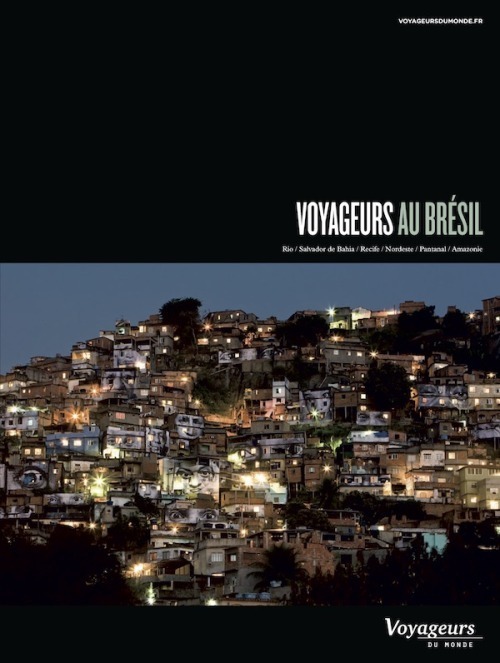
100 ANS D’AMOUR (ET DE MALENTENDUS) ENTRE FRANCE ET MUSIQUE BRÉSILIENNE
Au-delà des clichés qui parfois polluent le paysage brésilien vu de la France, il est deux domaines qui scellent l’élan de sympathie qu’ici on éprouve pour là-bas : le foot, considéré comme un art dès qu’un Brésilien taquine le ballon, au point que les Français acceptent avec philosophie de perdre contre les « vert et jaune » (même si la France a souvent gagné ces derniers temps !). Mais laissons de côté le foot, la Coupe du Monde 2014 au Brésil se chargera d’actualiser le propos.

L’autre domaine est bien évidemment la musique. De bossa en frevo, de samba en lambada, de forro en maxixe, que d’histoires, souvent d’amour, parfois de dépit, et dans les deux sens. Je vous propose de remonter le temps jusqu’au début du siècle passé, et d’égrener les succulentes aventures qui ponctuent le temps, défiant les modes au point de parfois les précéder. La réalité oblige à dire que la France empruntera plus au Brésil que celui-ci ne piochera dans notre Hexagone. Mais de ritournelles éphémères en mélodies classieuses, les échanges franco-brésiliens ne manquent pas de rebondissements.
youtube
Commençons par un énorme malentendu de l’histoire, on est en 1989. l’année du bicentenaire de la révolution française… et de la « lambada » ! Un « coup » monté par deux producteurs français, avec une boisson gazeuse, « ze » chaîne de télé en France et une « major » du disque. Kaoma, un groupe fabriqué à Paris, une frénétique danse à deux exportée du nord du Brésil, et une chanson… bolivienne ! Oui, vous avez bien lu : la « lambada » est une ritournelle andine « empruntée » par des Brésiliens et revendue « made in Brasil » chez nous. Une sorte de quiproquo vite submergé par une déferlante planétaire : on danse la lambada dans tous les bals du monde, mais aussi dans les ateliers de Peugeot en grève et même sur les gravats du mur de Berlin, fin 89. Un Brésil chromo et popu à la fois, loin de celui des grands maîtres de la M.P.B. (Musique Populaire Brésilienne). Rebelote en 1996 sur un mode mineur avec le groupe Carrapicho et son « Tic Tic Tac », n° 1 au top 50, mais seulement en France, soi-disant pour propager la culture amazonienne…tu parles !
youtube
Cette relation amoureuse entre la France et la musique brésilienne commence au début du siècle (le vingtième) par, déjà, un autre malentendu, cette fois-ci, une escroquerie, « La Matchiche ». un énorme tube dû à Félix Mayol. À une époque où n’existaient ni disque ni radio, un tube se mesurait en ventes de partitions et en exécutions dans les bals, il restait un « hit » pendant des années. Cette Matchiche, présentée comme un « air populaire tiré du folklore espagnol » était en fait un extrait d’un opéra brésilien d’Antônio Carlos Gomes, Il Guarany (1860), et son nom était la version francisée d’une danse des bals cariocas, le maxixe (prononcez machiche). C’est ainsi que, sans le savoir, la France entière a fredonné brésilien : « C’est la danse nouvelle, mesdemoiselles / cambrez la taille, petite taille / ça s’appelle la Matchiche, prenez vos miches / ainsi qu’une espagnole des Batignolles ».
youtube
1918, Rio de Janeiro, un drôle de tandem représente très officiellement la France durant la fin de la Première Guerre mondiale : ministre plénipotentiaire (ambassadeur), Paul Claudel, oui, l’écrivain, conseiller culturel, Darius Milhaud, le compositeur. Celui-ci traîne dans les bouges de Rio et il tombe sur un tango brésilien (à l’époque ça existe), « O Boi No Telhado ». Le titre l’amuse, et de retour en France, il compose la musique d’un ballet inspiré par Jean Cocteau, le titre en est la traduction littérale Le Bœuf Sur Le Toit. Il s’est au minimum inspiré de ce qu’il a entendu à Rio (certains parleront de plagiat, mais ça n’ira pas plus loin, cette fois). Rebondissement inattendu, en 1921 s’ouvre à Paris un club de jazz du même nom. Et c’est ainsi que l’équivalent de la jam-session, en français, deviendra… un bœuf !

youtube
En 1922, le Brésil conquiert quasiment la nuit parisienne. Duque, un danseur brésilien très en vogue de Montparnasse à Montmartre, fait venir Pixinguinha, flûtiste et leader des Batutas. Au programme, choro, ce swing instrumental urbain de l’époque, et le samba naissant (en portugais, le genre musical est masculin !). Bookés pour deux semaines, ils vont rester six mois à l’affiche, au Shéhérazade, le triomphe de la saison, toute la presse en parle. Duque offre à Pixinguinha un sax, grâce auquel il deviendra un musicien emblématique au Brésil dans le demi-siècle qui va suivre. Seulement voilà, les musiciens ont le blues du pays. Les Batutas rentrent à Rio et la… pardon… le samba laisse place nette à une autre danse latino-américaine, qui explose à Paris, le tango. De retour à Rio pour l’exposition universelle commémorant les 100 ans de l’indépendance du Brésil, Pixinguinha et ses Batutas font tube (en français) avec « Sarambá » : « Le samba se danse, toujours en cadence / petit pas par ci, petit pas par là / il faut de l’aisance, beaucoup d’élégance / les corps se balancent, dansez le samba »… Le Brésil a manqué son rendez-vous, il attendra son heure.
youtube
Dans un registre différent, le compositeur Heitor Villa-Lobos, qui révolutionne la musique dite classique avec ses amis intellectuels modernistes, tout en s’inspirant du choro, s’attaque au public européen et spécialement parisien, qu’il conquiert dans les années 20 et 30 avec notamment ses « Bachianas Brasileiras n° 5 ». Parrainé par Arthur Rubinstein, il fréquente l’avant-garde des compositeurs, comme Edgar Varèse. Il reste un des grands maîtres du XXe siècle, des deux côtés de l’atlantique.
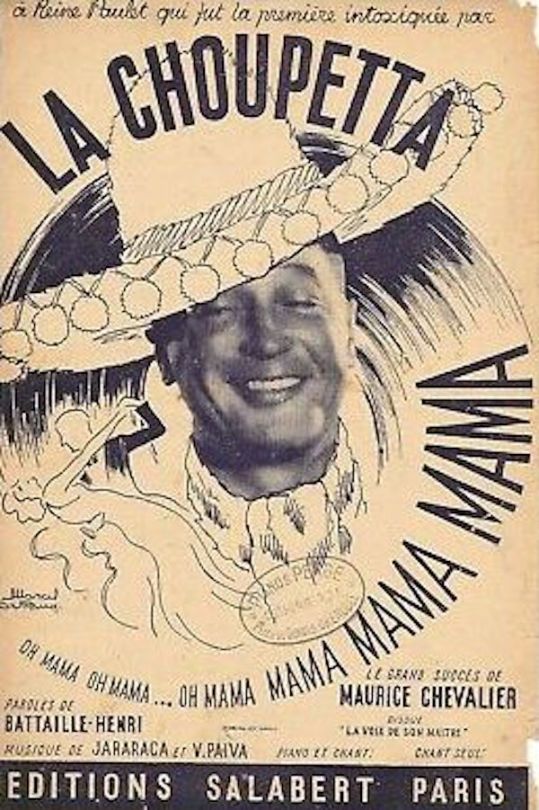
Dans les années 30, la chanson française en désir d’épices pioche dans le fonds musical tropical, Cuba, les Antilles françaises et, bien sûr, le Brésil. Nom générique, le typique ! Même Maurice Chevalier s’y met, avec « La Choupetta » (la tétine) qui n’a plus de brésilien que le nom : « Une choupetta, savez-vous c’que c’est qu’ça? / c’est un mot rigolo qui vient de Rio d’Janeiro / là-bas, chaque enfant bercé par sa maman / s’amuse à chanter après avoir pris sa tétée. » Ça ne vole pas haut dans l’entre-deux-guerres.
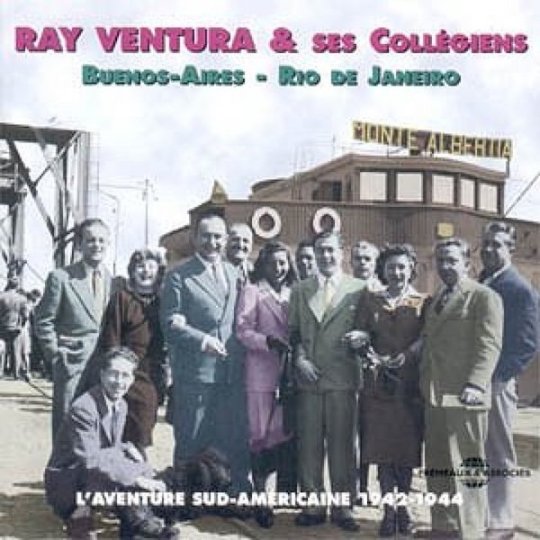
En été 42, un orchestre français s’évade de la morosité… et de l’occupation. Ray Ventura et ses Collégiens passent clando les Pyrénées et, d’un coup de bateau, se retrouvent au programme du Casino da Urca de Rio, au pied du Pain de sucre. Le big band français fait d’abord pâle figure à côté des rutilantes formations du cru. C’est le benjamin de l’orchestre, Henri Salvador, qui, avec son imitation désopilante de Popeye, sauve l’honneur de la France. « Le Popeye », titre la presse carioca. Mais Ray Ventura, le boss, joue (et perd) la paie de l’orchestre à la roulette et le big band est bientôt rapatrié sanitaire dans le Paris nazifié. Ils rentrent tous… sauf Henri Salvador qui, prudemment, vit quelques belles années entre Rio et Belo Horizonte, chantant de bar en bar. Il ne réintègre Paris qu’en 46 ! Sans avoir laissé d’autres traces que ses premiers enregistrements en tant que chanteur (avec Ray Ventura).

Les années post-libération voient la France, suivant les U.S.A., s’enticher de rythmes afro-cubains, le mambo et le cha-cha-cha, et brésiliens, samba et baion. Dario Moreno, turc, devient icône de tout ce qui est latino ou brésilien (de loin, ça se confond !), voir « Si Tu Vas À Rio » et « Brigitte Bardot » (la chanson adaptée d’un tube de carnaval) ; justement, Brigitte Bardot (la vraie !) danse un furieux mambo dans Et Dieu Créa La Femme et s’affiche à Búzios, le Saint Trop’ brésilien.
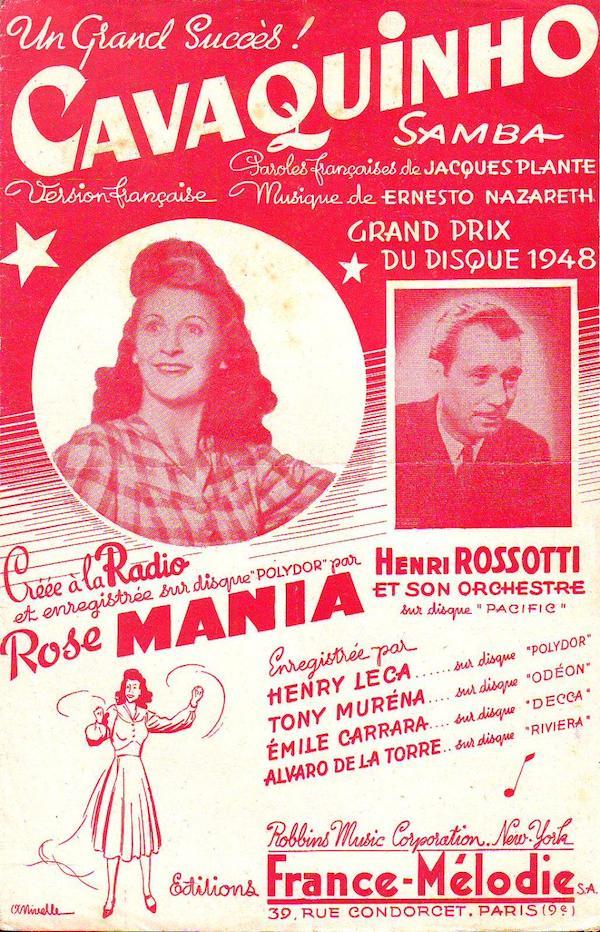
La variété française des années 50 et 60 continue de piocher dans les tubes do Brasil, comme Gloria Lasso, Ray Ventura, Jacques Hélian, et une certaine Rose Mania, avec son « Cavaquinho ». Pendant un moment, tout est samba. Encore une fois, beaucoup de pacotille. C’est l’époque où une certaine jet-set remplit un long-courrier pour Rio de Janeiro à l’initiative du producteur Eddie Barclay. Ça flambe !
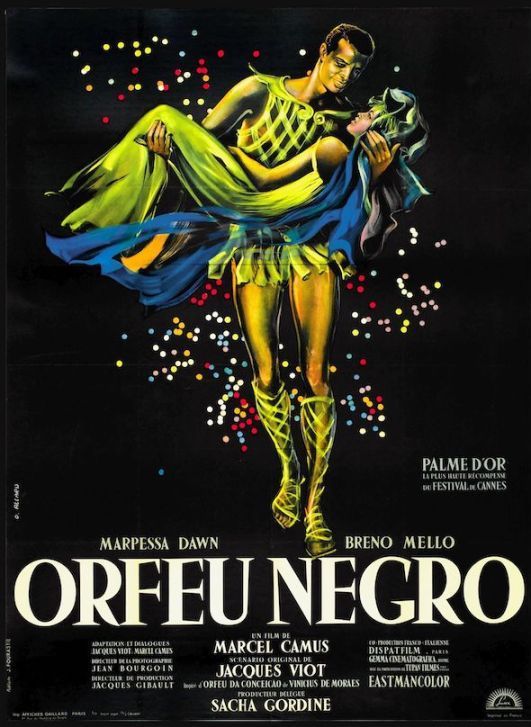
C’est alors que nous arrive de Copacabana et Ipanema, les plages chic de Rio, une brise tropicale nettement moins folklorique, la bossa nova, avec son peintre minimal, João Gilberto, son architecte de l’épure, Antônio Carlos Jobim, et son poète amoureux, Vinicius de Moraes. Une sorte de samba susurrée sans débauche de percussions. et c’est la B.O. d’un film français tourné à Rio, Orfeu Negro, de Marcel Camus, qui remporte la Palme d’or à Cannes en 1959. Le genre musical, adopté par les tenants du jazz cool US (Stan Getz, Gerry Mulligan), devient un label planétaire. Le Président Kubitschek, qui inaugure la nouvelle capitale, Brasilia, est surnommé… « le Président bossa nova ».
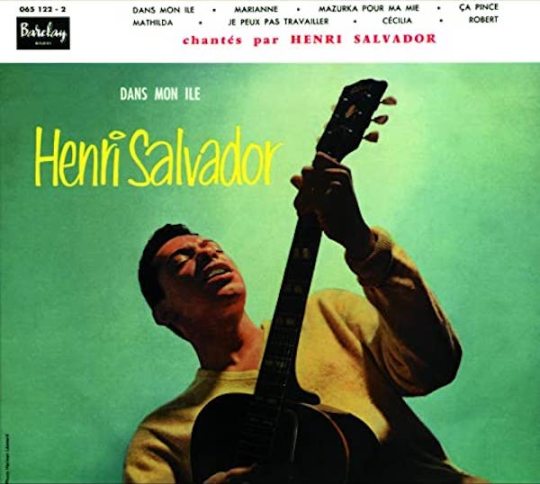
Bon, ce n’est pas pour autant qu’Henri Salvador a inventé la bossa nova, comme certains l’ont proclamé. Jobim a bien été charmé par Salvador et « Dans Mon Île », ballade créole figurant dans la B.O. d’un obscur film italien, mais l’influence est pour le moins lointaine. Au moment où la bossa nova part à la conquête de la France, voilà que les Beatles et la tornade britiche relèguent cette douce brise au rancart.
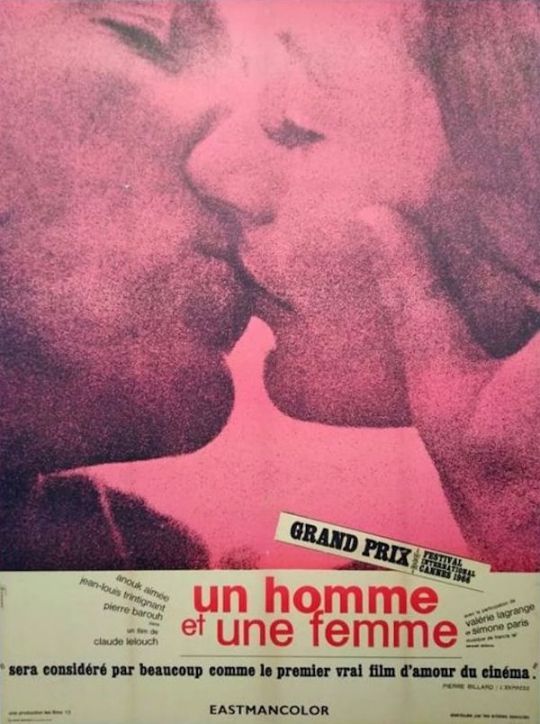
Pas pour longtemps. Au Festival de Cannes, en 1966, cette fois, un autre film français est primé, Un Homme Et Une Femme de Claude Lelouch, et son leitmotiv sonore s’incruste durablement dans les oreilles, un certain chabada-bada, dû à Francis Lai et Pierre Barouh. Ce dernier, un fondu de Brésil, va initier des générations de Français à la musique brésilienne. Il faut dire qu’à Paris se sont installés Vinicius de Moraes, poète, conseiller culturel à l’ambassade du Brésil et grand noceur, et le génial guitariste Baden Powell, avec lequel Pierre Barouh a enregistré la fameuse « Samba Saravah ».
youtube
Saravah, justement, un label d’allumés créé par Barouh (où éclateront Higelin et Brigitte Fontaine, entre autres), et aussi un incroyable film tourné au Brésil par le même, avec des séquences musicales d’anthologie. Autour de tout ce monde bohème gravite un petit peuple dingue de samba et de bossa, d’où de mythiques nuits blanches sous l’étoile du Brésil.
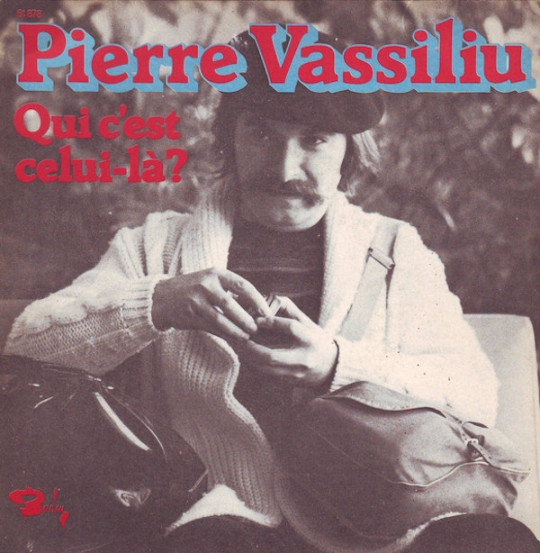
youtube

youtube
Une autre génération déboule au Brésil, plus contemporaine voire plus sulfureuse, qui fait figure de contre-pouvoir (au moins artistique), face à la dictature militaire qui s’installe. Parmi eux, Chico Buarque, véritable conscience en ces années de censure, chanteur et poète essentiel et, curieusement, souvent adapté en français à tort et à travers, parfois détourné voire malmené : Vassiliu (« Qui C’est Celui- Là ? »), Zanini (« Tu Veux Ou Tu Veux Pas ? »), Dalida (« La Banda ») et, pire encore, Sheila (qui transforme le poignant « Funeral Do Lavrador » (enterrement d’un paysan) de Buarque en un grand-guignolesque « Oh Mon Dieu Qu’Elle Est Mignonne » !!!). Heureusement, Barouh, Nougaro et Moustaki se montrent plus inspirés dans leurs adaptations occasionnelles et sauvent l’honneur de la chanson française.

La dictature militaire brime la création au Brésil, et engendre un exil souvent politique, parfois artistique et à l’occasion les deux. En 1971, les Tropicalistes Gilberto Gil et Caetano Veloso, qui ont été exilés et catapultés en Angleterre par les militaires pour avoir défié l’ordre moral, passent par Paris, où ils sont ovationnés par des milliers de compatriotes en exil. Ils vont donner une impulsion novatrice, à la fois pop et afro à l’image de la musique brésilienne, ici. Par ailleurs se crée une scène brasilo-parisienne, de nombreux groupes se forment. Le jazz et la samba fusionnent avec Nana Vasconcelos puis Tânia Maria. Et en 79 a lieu le premier festival brésilien de Paris à la halle Baltard de Nogent-sur-Marne : quinze groupes quasiment tous basés à Paris, dont Les Étoiles et Alceu Valença, six mille spectateurs, un triomphe pour les nouveaux producteurs de Garance ! Par contre, dans l’autre sens, c’est léger : le français a perdu depuis les années 40 sa prédominance en tant que langue étrangère, alors quand le Brésil chante en français, ça se remarque : Caetano Veloso reprend « Dans Mon Île » d’Henri Salvador, et João Gilberto, le pape de la bossa, « Que Reste-T-Il De Nos Amours ? ». Toujours le patrimoine. Décidément, l’échange est foncièrement déséquilibré...
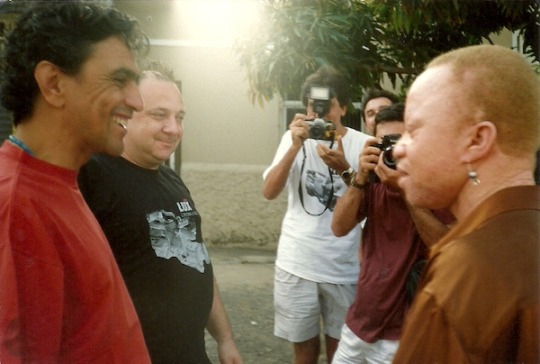
1981, ce sont les années Mitterrand, et plus encore les années Jack Lang, tant le ministre de la Culture s’est entiché de Brésil. O Intercambio (l’échange) bat son plein. Tous les grands du Brésil écument les scènes d’Europe, de l’Olympia à Montreux. Gilberto Gil chante « Touche Pas À Mon Pote » (en français dans le texte à la fête de SOS Racisme place de la Concorde). De méga-festivals brésiliens à nice en 84 et à Paris en 90/91, et puis les années France-Brésil en 86 avec Couleurs Brésil au Zénith et à la Grande Halle de la Villette. Un mouvement plus tout à fait à sens unique, France Métisse voit tourner au Brésil la scène afro-caraïbe, avec Kassav’, Manu Dibango, Salif Keita, Ray Lema.
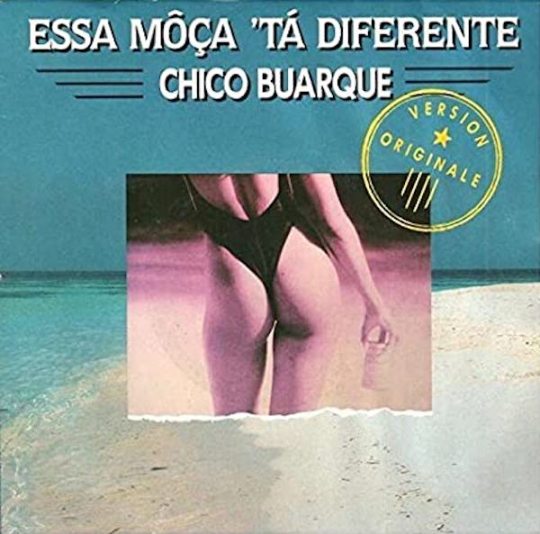
youtube
Et puis la pub surfe sur l’air du temps et s’approprie des airs oubliés, comme cette chanson exhumée du répertoire de Chico Buarque (encore !), « Essa Moça Tá Diferente » (cette fois en V.O.), qui fait onduler les bulles d’une boisson gazeuse (une autre que pour la « lambada ») : aussi incongru que si on vantait un produit français sur du Brel au Brésil !!! Mais du coup, c’est un méga-tube, un an avant la « lambada » ! On exporte aussi le Trio Elétrico, camion à musique du carnaval de Bahia, à Toulouse en 86 puis sur les plages françaises en 90. Derniers phénomènes du siècle dernier qui se perpétuent jusqu’à aujourd’hui : la capoeira (à la fois art martial et danse), héritée des esclaves noirs, qui fait son trou dans nos villes et a la cote jusque dans les banlieues, et les batucadas qui prolifèrent partout en France, dans l’esprit des écoles de samba de Rio ou des blocs afro de Salvador…
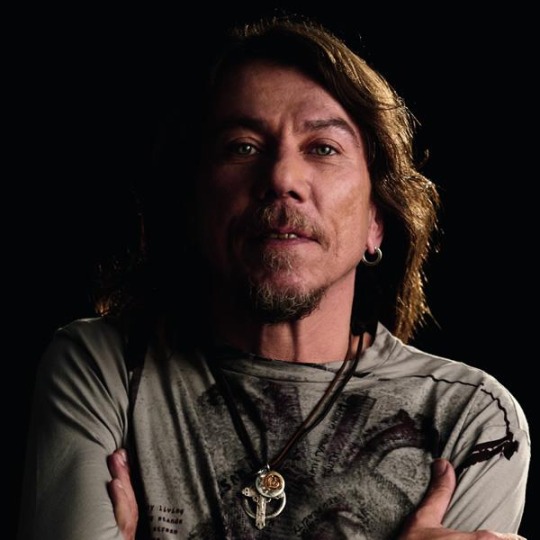
Nouveau siècle, nouvelles ouvertures. Cette fois, c’est le gouvernement Lula et son ministre de la Culture pendant cinq ans, Gilberto Gil, qui portent la parole… en musique. D’autres scènes brésiliennes prennent de l’ampleur par chez nous : thématiques, comme l’electro de Marcelinho da Lua, la drum’n’bass de Marky et Patife (des sommités mondiales du genre) ici et Laurent Garnier là-bas, le hip hop/samba de Marcelo D2, voire le baile funk des périphéries ; géographique, avec la confirmation d’un pôle créatif dans le Nordeste, Recife, avec la venue régulière de Lenine, DJ Dolores, le Spok Frevo Orquestra, plus Silverio Pessoa et Renata Rosa, qui flirtent avec les rythmes (et artistes) occitans, et Manu Chao, qui arpente régulièrement le Brésil. En règle générale, les échanges sont plus équilibrés avec les artistes français : à l’année du Brésil en France (2005) a répondu celle de la France au Brésil (2009), avec notamment des tournées mixant les artistes des deux pays, comme Station Brésil de João Pessoa à São Paulo et un hommage à Gainsbourg, dans un théâtre pauliste, avec les Brésiliens de l’Orquestra Imperial plus Caetano Veloso accueillant Jane Birkin et Jean-Claude Vannier, l’arrangeur seventies de Gainsbourg. Impérissable, aux dires de ceux qui y ont assisté.
youtube
À CONSULTER ÉGALEMENT SUR CE SITE ► DJ RKK Playlists ► Pour « Voyageurs du Monde » @ Deezer / Parce que Rémy Kolpa Kopoul, c’était le Brésil « mais pas que ! » LL

#RKK#remykolpakopoul#legrandremix#grandremix#bresil#brasil#brazil#rkkbrasillegrandremix#brasilgrandremix
4 notes
·
View notes
Photo

WM 1966 ENGLAND Group 2 Argentina vs West Germany at Villa Park Birmingham Attendance 46,587
Argentina 0–0 West Germany 16 July 1966 Saturday (15:00 BST) Image From Twitter
- - - - - - - - - - - - - -
1966 World Cup Argentina v West Germany pic.twitter.com/fJUnhNg2fn
— The League Magazine (@Theleaguemag) May 6, 2020
- - - - - - - - - - - - - -
Planet World Cup Com http://www.planetworldcup.com/CUPS/1966/groupb_arg_v_ger.html
REFEREE Konstantin Zecevic (Yugoslavia) LINESMEN Joaquim Fernandes Campos (Portugal) Bertil Lööw (Sweden) EXPULSIONS 65' Jose Albrecht (ARG)
ATTENDANCE 51,419
ARGENTINA AGE D.O.B. CLUB 1 GK Antonio Roma 34 13 Jul 1932 Boca Juniors 4 DF Roberto Perfumo 23 03 Oct 1942 Racing Club 7 DF Silvio Marzolini 25 04 Oct 1940 Boca Juniors 8 DF Roberto Ferreiro 31 25 Apr 1935 Independiente 12 DF Jose Albrecht 24 23 Aug 1941 San Lorenzo 10 MD Antonio Rattin (c) 29 16 May 1937 Boca Juniors 15 MD Jorge Solari 24 11 Nov 1941 River Plate 16 MD Alberto Gonzalez 24 21 Aug 1941 Boca Juniors 19 FW Luis Artime 27 02 Dec 1938 Independiente 20 FW Ermindo Onega 26 30 Apr 1940 River Plate 21 FW Oscar Mas 19 29 Oct 1946 River Plate Coach: Juan Carlos Lorenzo 43 22 Oct 1922
WEST GERMANY AGE D.O.B. CLUB 1 GK Hans Tilkowski 31 12 Jul 1935 Borussia Dortmund 2 DF Horst-Dieter Höttges 22 10 Sep 1943 Werder Bremen 3 DF Karl-Heinz Schnellinger 27 31 Mar 1939 AC Milan (ITA) 5 DF Willi Schulz 27 04 Oct 1938 Hamburger SV 6 DF Wolfgang Weber 22 26 Jun 1944 1.FC Cologne 4 MD Franz Beckenbauer 20 11 Sep 1945 Bayern Munich 7 MD Albert Brülls 29 26 Mar 1937 Brescia (ITA) 8 MD Helmut Haller 26 21 Jul 1939 Bologna (ITA) 12 MD Wolfgang Overath 22 29 Sep 1943 1.FC Cologne 9 FW Uwe Seeler (c) 29 05 Nov 1936 Hamburger SV 10 FW Siegfried Held 23 07 Aug 1942 Borussia Dortmund Coach: Helmut Schön 50 15 Sep 1915
- - - - - - - - - - - - - -
WikiPedia 1966 FIFA World Cup https://en.m.wikipedia.org/wiki/1966_FIFA_World_Cup
24 MAY 2020 Sunday
1 note
·
View note
Text
¡No te pierdas el debut de Jimena Gonik el viernes 19 en Club Cultural Matienzo!
JIMENA GONIK La multifacética artista despide su álbum debut “Romantik”

Cantante, compositora, música, actriz, emerge como una figura diferente en la escena musical argentina. Dueña de una voz privilegiada y de un estilo personal genuino, esta joven y multifacética artista de 24 años oriunda de Villa Crespo se abre camino en la industria más allá de toda tendencia, gracias a la fuerza del boca en boca y al impulso creativo de la auto-gestión.
De genética y hábitos melómanos tempranos, sus influencias abrazan el multiverso y comprenden artistas tan disímiles como esenciales de la altura de Ella Fitzgerald, Queen, Carlos Gardel o Lauryn Hill, entre muchísimos otros. De ahí a que su música, aunque coquetea con el pop, se vuelve inclasificable. Y de ahí también, su reciente revelación como impensada influencer, sumando más de 500 mil seguidores en su cuenta de Instagram en tan solo tres meses a partir del proyecto “366 discos” en el cual, desde el mes de Diciembre, se ha lanzado a recomendar un disco por día durante todo un año. Comprometida como es, para Jimena esta iniciativa es mucho más que subir un video diario y responde a la necesidad interna de conectar con otras personas que también aman la música, incentivando a su vez a más gente a retomar un hermoso hábito que se ha perdido: escuchar discos enteros.
Ganadora de la Bienal de Arte Joven 2022 y “Proyecto Disco” de Estudio Urbano llenó Niceto Club, Niceto Bar y abrió en 2023 para Los Tipitos en La Trastienda, además de realizar una exitosa gira por San Juan y Mendoza.
Cerrando el ciclo de su disco debut “Romantik” (2022) Jimena se presentará en vivo en formato full banda el próximo viernes 19 de Abril en el Club Cultural Matienzo. Mientras tanto, nuevas canciones van tomando vida y color para su segundo álbum en los estudios Romaphonic de Buenos Aires. El nuevo material será lanzado por Popart Discos, sello con el cual editó el single adelanto “El Abrazo”.
0 notes
Text
Algunos mojones sobre la actividad poética de Omar Cao || por Patricia Verón
“Lo menos literario que se te ocurra
tiene antecedentes literarios”. Omar Cao

Una imagen: la puerta es de doble hoja de madera con postigos de vidrio opaco. Abrea una habitación en penumbra y en esa habitación un escritorio caoba abarrotado de libros sin orden aparente. Corrían los años 70, inicios, y el viaje era hasta Morón. ¿De quién son esos libros? Otra imagen: patio de sol y enramadas de rosas, una puerta de chapa verde que se abre y aparece Omarcito, como le decía su madre cuando contaba alguna que otra cosa de su maternidad, una maternidad que en la memoria de su hermana resultaba epopéyica. Omar, 1,90 o casi me dice: Hola, Patri. En ese momento me quedaba bien el apócope. Última imagen para no abundar: un garaje con parral y piso de mosaico y al fondo el galpón del taller metalúrgico. Omar repuja en uno de los tornos y al ratito de verme se afloja la cinta que lo sostiene a la máquina y al baila del tornero, pone a calentar la pava y me pregunta: ¿Trajiste algo para leer? Un ajedrez que aglutina a los contrincantes en las horas de poca producción. Y los crucigramas del diario que se devoran con fruición. Mi hermano me dice: preguntale a Omar que sabe. Cuando los cuadros están casi completos vuela una mosca y empieza la discusión. Una pregunta: Voy hasta acá nomás, ¿querés venir? Hasta acá nomas es una unidad básica del partido intransigente. Me presenta a los militantes. Chancean y toman mate. Cuando va en serio, Omar aporta a la conversación algunas líneas breves y después me indica: ¿ves esa chica que viene ahí? Pinta. Me acompaña hasta la parada y canta: pucherito de gallina…
Hilos de la memoria que intenta tejer un relato que deje a la ficción hacer los suyo. Mas que una fría cronología, imágenes de un viaje inabarcable. Cortado, zurcido. Como los remiendos de los pobres que salvan la totalidad en un liencito de cinco por cinco.Parte de la historia nace en la piel de un viajante de comercio, es autobiográfica si se quiere, pero los ojos son de un viajero. Porque el viajante tiene un objeto concreto y material pero el viajero se deja llevar por lo incierto. Hacer un recorrido de su actividad poética -cuanto más de su poética- a partir del viajero.
Entonces iniciaría una palabra en ese viaje de la memoria que se llama infancia. Y se sitúa en la geografía en donde finalmente fijo su residencia y está presente en su último libro “El país de las estancias”. Los km de la ruta 3. Pero en algún lugar, antes, mucho antes, está ese “Macadam muerto/al pie de la vereda de vainillas/de la estación/La calle Donovan/los altos altísimos/paraísos con flores/el silencio fresco/la playa de maniobras/y sus raras casitas/de durmientes apilados/los membrillares largos/las huellas del ganado/los cuchillos las astas/los sombreros/los ponchos los caballos/los vasos en el barro…” de ese poema donde sin duda evoca a su padre y al barrio de los Tapiales.
Con escritores como David Lagmanovich, Luis Luchi, Juan Núñez, Ariosto del Degan, Li Po, inicia junto al entrañable amigo Hugo Salerno, ese recorrido de los tres sabios ciegos que le deben a su condición la creación de una verdad que nada tiene que ver con el racionalismo. Para entonces llevaba publicado dos libros de poesía, uno de ellos,migrado de la Luna y otros asuntos lanzado por primera vez por la familia Gandolfo en Rosario bajo el sello del Lagrimal trifurca. L.L.Q.S.C.C.L.B es el sueño que luego sería retomado en “la cueva” propiciada por Ricardo Rubio, un lugar para el intercambio y la experimentación en el arte, donde las ganas de generar comunidad y descubrimiento crecían amenazadas por el horror de la dictadura. Gacetillas, libros, revistas, plaquetas de ese sueño hecho editorial en Lomas del Mirador, llegaban con algo de retraso. Allí leí por primera vez al amigo entrañable y a Emilse Pratolongo, poeta que me conmovió.
Pisando los ochenta y desde Avellaneda, “una varice que recorre la ciudad”. Tal el Leit de una revista de cultura y política, que incluía la publicación de poesía en sus páginas: “Riachuelo”, dirigida por Angel Fichera, junto a una decena de redactorxs que iban incorporándose en los distintos números como Osvaldo Escribano miembro fundador, Ariel Búmbalo, el dibujante Rubèn Pergament, entre muchxs otrxs. Con títulos como “Deserción escolar, un paso hacia la sumisión”, “Ahorro, inversión e importaciones”, “Vida y muerte en las comunidades indígenas”, “La palabra y la libertad” o “Guerra, desocupación y otras coincidencias”, en una de sus editoriales del año 80 puede leerse: “Devaluaciones, parricidio, desocupación. Escándalos en River Plate. Se funden importantes empresas. Se intervienen bancos. Atentan contra la vida del famoso pistolero Ronald Reagan y contra la del Papa (…) El duro invierno se avecina con una violencia inusitada, nunca antes vista, de enormes proporciones y de escalofriante magnitud. ¿Se aparearán los dos osos panda? ¿Se congelará el yeti?¿Pasará el invierno? ¿Importaremos calor de hogar de Taiwan?(…) Alarmas, pestes, epidemias. Tal cual (pero al revés) con lo sucedido por la fiebre amarilla de 1870, las familias pudientes de barrio Norte emigran hacia el Sur (zonas más protegidas?) ¡Se imaginan al microcentro en Aldo Bonzi! ¿La calle Florida en Laprida de Lomas de Zamora? ¿New York City en Elsieland? ¿Borges tomando el té con Jorge Asis? ¿Las patinetas por el arrabal adoquinado?”.
Líneas no exentas de sarcasmo para situar una problemática que había comenzado a ser apremiante en esos años: la ocupación masiva del territorio conurbano por poblaciones corridas de la ciudad y sus orillas, dictadura mediante. Y allí también pudo leerse, acaso por primera vez, esa metáfora que intentaba sobreponerse a la soledad y al aislamiento de esos años funestos: “Un barco late su cruz del sur en la sombra/en balanceo suave/con voz de latido las aguas”. Este y otros poemas de Cao fueron publicados por la revista como también una extensa entrevista hecha por el poeta y su amigo entrañable a Pedro Gaeta, pintor argentino y uno de los fundadores del grupo “Gente de Buenos Aires”.
Cae el muro de Berlín y otra tragedia se cierne sobre Latinoamérica: la irrupción del neoliberalismo. La comunidad amasada alrededor de la revista antes mencionada vuelve a aparecer catorce años después pero haciéndose cargo de la edición de un libro de Omar: “Palos de ciego y otras yerbas”. El prólogo de Salerno declara de alguna forma qué significa el gesto de esa publicación: “Omar Cao es con la poesía como esas gallinas que desaparecen de la casa y cuando ya las daban por perdidas o robadas, aparecen con varios pollitos. Cao se autodefine muchas veces como “Poeta Re-tirado” pero al mismo tiempo aparece con un centenar de poemas” Una forma de regreso después de años de dedicarse a la escritura y a la crianza de sus hijxs, sobreponiéndose a una realidad social obscena y criminal.
Ese libro hecho carne en González Catán, su casa para entonces, fue motivo también del reencuentro con Luis Luchi, que había regresado de España y asistió a la presentación. Una verdadera fiesta realizada en el Club Portugués, con malabares, danza, teatro y por supuesto lectura de poesía. Inolvidable ver al viejo Luchi rodeado de escuchas a los que invitó a acercarse para aminorar la extensión del salón y generar el clima necesario para la escucha. Por esta misma época Omar también fue guionista de la historieta “El fernandez”, una especie de saga de un personaje marginal que existe en cualquier conurbano del país. Se publicó en el Suplemento literario “El Angel de Virrey del Pino” y la dibujante fue Graciela Favot. Este recorrido se cierra con la publicación de la antología “Esquina sin Ochava”, año 2000, realizada por el grupo literario Per-Se que funcionaba en la Biblioteca Popular 303 de Villa Sahores y era coordinado por el poeta. La antología tiene carácter de homenaje a dos docentes de San Justo: Haydee Paley y Aroma Ligia. En sus paginas pueden leerse textos de las mismas como así también de los integrantes del grupo.
Podr��amos decir que la historia argentina tiene al menos tres momentos fundacionales: la revolución de mayo, el gobierno del primer peronismo y el 2001. Asentados en los años posteriores al último, el viaje se diversifica entre talleres de lectura, colaboraciones publicadas en el suplemento literario del NCO, “Conurbano/Poesía”, la incorporación a la editorial del mismo nombre, integrada también por Claudio Kapeller, Carlos Kuraiem y por quien esto escribe, y sus participación en el Festival Internacional de Poesía de Rosario.
De los talleres es notable el “Aula Poética Almafuerte” que funcionó en el Centro Cultural Alberto Vacarezza y consistía en la propuesta de un/a poeta por parte de los participantes quienes ofrecían lecturas diversas acerca del mismo. Si bien el coordinador era Omar, el eje se corría hacia todos los integrantes. Así se abordaron textos de J.L.Ortiz, Romilio Ribero, Manuel J. Castilla, Alejandra Pizarnik, Juan Gelman, Luis Luchi y Pedro Godoy.
La piedra es imparable y puesta a rodar rueda por las ediciones como Cruz de Mayo donde por primera vez pueden leerse los cuentos y relatos completos hasta ese momento de Pedro Chappa bajo el título “Un violín en Praga y Villegas”, del año 2011. Es necesario recordar un fragmento del post-logo escrito por Cao, que es algo más que una justificación a la modestia de la edición, como inicia. “ (…) no hay ni ha habido otra, ni mejor ni peor ni, obvio, la consideración de que exista. Nuestra vida social, la de Pedro y la de tantos, ha transcurrido en años ásperos, inhóspitos, violentos, poco aptos para la producción artística y su aprendizaje, al menos en lo que a la Argentina profunda se refiere. Ahora los vientos han cambiado y también el escenario, claro. No tanto parece como para que una editorial nuestra - ¿Queda alguna? - publique a Pedro Chappa, pero sí para seguir intentando la resistencia ante el avance de la colonización cultural, la banalización de la cultura y la sustitución del Arte por “el espectáculo con algo de Arte en el mejor de los casos” apto para la comercialización masiva y rentable.Cosas para discutir apasionadamente pero con altura, como debe ser”.
De ninguna manera podría dejar de mencionar la presencia fundamental que tuvo Omar en la realización del libro coral Alto Guiso, sobre todo en lo que caracterizó a su incidencia en la cultura, esto es, la comunicación, el aunar, el formar comunidad. Carácter que se ve reflejado a sí mismo en la última revista que publicó bajo es sello editorial “El cardo Azul”, (sello que diera a luz al menos una decena de libros de autores zonales) donde pueden leerse textos de miembros de la revista Riachuelo, de la académica Rosa Oviedo, la multifacética Anahí Cao junto a compañeras del Galpón Cultural 3 de Catán, la lingüista Ivonne Bordelois a quien Cao le dedica una nota sobre su poética y poemas del joven Braian Alvarez, entre otros.
Quiero terminar como empecé, diciendo algo personal y si lo personal es político, entonces mejor. A Omar sigo viéndolo en las tardes con olor a glicinas o a bosta de yegua mal uncida, en un cuchillo clavado como acierto al vacío que deja sobre la mesa el pan compartido, en la nervadura de los abandonados, en la palabra apartada y devuelta a la lengua con una increíble transparencia, en el ojo gigante que observa la siesta celeste y quieta, en la flor de tu vestido o en esa peineta caída que él acomodaba con la mirada sin que te dieras cuenta. Estará en esos diálogos siempre empáticos, resistentes, oblicuos, amplios y discutidos, abiertos a la contradicción al buen decir y a la historia. Diálogos maestros. Estará en esa última frase, casi una humorada, que aún dicha en una cama de clínica y atenazada por los medicamentos, actuó como un último puntal de guía: “el amor no tiene fronteras…no viste que Keaton se enamoró de una vaca?”
P.V.
3 notes
·
View notes
Text
Chequeos médicos gratuitos a niños y adolescentes que practican deportes en clubes
📬 Chequeos médicos gratuitos a niños y adolescentes que practican deportes en clubes 📌 #LaPlata #Sociedad #Salud 📲
La Municipalidad de La Plata, en conjunto con la Facultad de Ciencias Médicas de la UNLP, avanza en un Programa de control integral de la salud a niños, niñas y adolescentes que concurren a clubes de fútbol de la ciudad. Además, promueven la alimentación saludable y completan el calendario de vacunación.Con el objetivo de concientizar sobre la salud, prevenir enfermedades cardiovasculares y…

View On WordPress
#adolescentes#Asociación Iris#Club ADIP#club Tricolores#clubes de fútbol#COVID-19#enfermedades cardiovasculares#Enrique Rifourcat#Facultad de Ciencias Médicas#La Plata#Marcela Walker#Municipalidad#niñas#niños#San Carlos#UNLP#Villa Castells#Villa Elvira
0 notes
Text
Oceanside CA Condo, Pacific Villas Vacation Rental
Oceanside Vacation Rental, Pacific Villas Condo
Aver. Daily Rate $149 | 25 Reviews, 4.9 /5. Location: 506 S The Strand, Oceanside, CA 92054. Misc: 1 BR, 1 BA Oceanfront Residence, 500+/- s.f., Sleeps 4.

Oceanside Beach Vacation Rental Home
Oceanside condo, beach vacation rental at Pacific Villas. This resort condominium has been recently renovated, the condo features a gorgeous stone fireplace and vaulted ceilings, with modern furnishings and spacious floor-plan. Relax on the balcony and enjoy the sea breeze and exceptional coastal views any time of day. The ocean-facing condominium has incredible views and is situated in a low-density (6-units) complex on the Oceanside Strand. This oceanfront property is ideal for couples and/or small families.
Visit: Oceanside CA Condo, Vacation Rental
Oceanside, So. California
Oceanside in southern California has an abundance of outdoor activities and attractions, plus the amazing beaches. Centrally located between San Diego and Los Angeles, Oceanside is convenient to a variety of amusement parks and family activities such as Disneyland, Legoland, Sea World and the San Diego Zoo. Oceanside allows you to jog, bike or skate to your heart’s content. Bike the San Luis Rey River Biking trail or take part in private o group surf lessons from a local surf school – go deep-sea fishing, diving or whale watching. For the golf lover, there are 6 courses in or near Oceanside, you’re sure to find a public or private course to fit your game – Oceanside has something for everyone! Source: VRBO
*Information deemed reliable but not guaranteed.
Other Resort Properties:
Phoenix West II Condo Sales & Vacation Rentals, Orange Beach Condo For Sale at Phoenix West II List Price: $595.000 Details: 3 BR, 4 BA Resort Property with approx. 1,955 sq. ft.Orange Beach AL Real Estate Phoenix West II condo…
San Carlos Condo Sales & Vacation Rentals, Gulf Shores AL Condo For Sale at San Carlos List Price: $637,000 Details:3 BR, 3 BA Beachfront Property with approx. 1,565 sq. ft.Gulf Shores Resort Real Estate Gulf Shores AL condo for…
Panama City Beach Vacation Rentals & Sales, Splash Condo Panama City Beach FL Condo, Splash Vacation Rental Aver. Rate: $114/night | 29 Reviews, 4.9/5. Details: 1 BR, 2 BA Beachfront Property with approx. 890 sq. ft., Sleeps…
Beach Club Condo Sales & Vacation Rentals, Gulf Shores AL Condo For Sale at Beach Club List Price: $519,000 Details: 3 BR, 3.5 BA Gulf-front Property with approx. 1,315 sq. ft.Gulf Shores AL Real Estate Beach Club condo for sale…
Harbor Cove Condo Sales & Vacation Rentals, Orange Beach AL Condo For Sale at Harbor Cove List Price: $427,250 Details: 3 BR, 3 BA Waterfront Property with approx. 1,395 sq. ft.Harbor Cove Condominium Home Orange Beach real estate for sale…
Pacific Villas Condominium, Oceanside California Via: Oceanside Vacation Rental at Pacific Villas Condos
-
2 notes
·
View notes